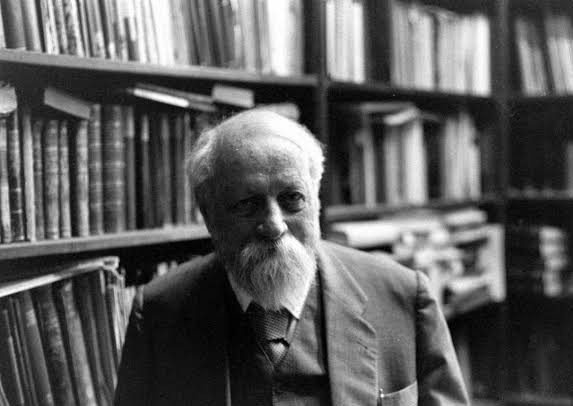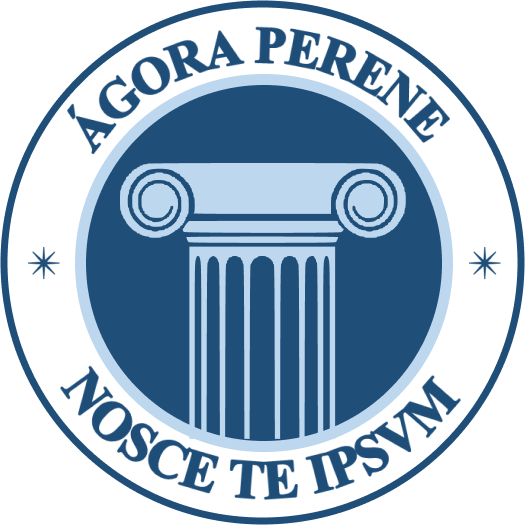
"The humanly correct is therefore the service of the individual who realizes the true individuality that is creatively identical to him. To take direction in the decision therefore means: to take direction from the point of being in which, by carrying out on my part the project that is me, I find my awaited divine mystery of my created individuality." Martin Buber, in Images of Good and Evil.
Estevan de Negreiros Ketzer
Clinical Psychologist. Doctor of Letters (PUCRS). Email: [email protected]
He was born on February 8, 1878, in Vienna, capital of the Austro-Hungarian Empire. At the age of 4, he experienced the separation of his parents. He goes to live with his paternal grandparents in Galicia, in the town of Lemberg, in the south of Ukraine. He entered regular school at the age of ten, the Franz Josef Gymnasium, a Catholic school. Buber developed a taste for languages, knowing Polish (the school language), French, German and Hebrew. He became acquainted with the work of Rashi (Rabbi Schlomo Itsaac).
He spent a lot of time on his father's country estate in Bukovina, also in Galicia, where he says he had "real human contact with nature". Between the ages of 15 and 17 he spent a lot of time reading philosophy: Prolegomena to all future metaphysicsby Kant; and Thus Spoke Zarathustraby Nietzsche. The reflection on time in the idea of the eternal return of the same, infinite full of finite series. His studies on philosophical anthropology are exposed in the works Between Man and Man (1947), Images of Good and Evil (1952), his most important book, Me and You (1923), recognized as one of the most influential of the 20th century.
In 1897, he joined the philosophy faculty in Leipzig, Germany. At the age of 25, he met Theodor Herzl. In 1898, he joined the ZionistHe took part in congresses and organizational work. In 1899, while studying in ZurichBuber met his future wife, Paula Winklerwho left the Catholic Church and in 1907 converted to Judaism. In 1902, Buber became the editor of the Zionist movement's official newspaper, The World. He took part in the Sixth Zionist Congress in 1903. Develops his studies in the doctrine of the rabbis of the lineage of Baal Schem Tov, doctrine of the chassidutthe benevolent. Write the books Stories of the Rabbi (1949), Rabbi Nachman's stories (1956), The legend of Baal Schem (1908) e The path of man (1935), based on the Chassidic doctrine. He develops the idea of experience (Erleibnis) as of paramount importance for man's encounter with himself.
In 1921, Buber began his close relationship with Franz Rosenzweig. In 1922, he and Rosenzweig cooperated in Rosenzweig's Jewish House of Learning, known in Germany as the Lehrhaus. In 1925, they began the project of translating the Hebrew Bible, Tanachfrom Hebrew into German. They wrote two articles on Bible translation. The books Daniel, dialogues on realization (1913), Moses (1945) e Prophetic faith (1949) reveal his important biblical studies.
Martin Buber was one of the founders of the intellectual movement Brit Shalom (peace alliance) in 1925, which sought peaceful coexistence between Arabs and Jews in Israel. Their aim was to create a center for Jewish cultural life in Israel, echoing the earlier ideas of Ahad Ha'Am. They created a monthly magazine, Sheifoteinuand organized Arabic courses for Jews living in Palestine. Supporters and founders of Brit Shalom included economist and sociologist Arthur Ruppin - founder of the political party Ichud -, the philosopher Hugo Bergmannthe historians Hans Kohn, Gershom Scholem, Henrietta Szold and Israel Jacob Klieger and the physicist Albert Einstein.
In 1930, Buber became an honorary professor at the University of Frankfurt am Main, but resigned his professorship in protest immediately after. Adolf Hitler came to power in 1933. He then founded the Central Office for Jewish Adult Education, which became an increasingly important body as the German government banned Jews from attending public education. In 1938, Buber left Germany and settled in Israel, receiving a professorship at the Hebrew University of Jerusalem. Buber taught introductory anthropology and sociology. In 1947, he was forced to flee his home in Abu Tor, Jerusalem, due to the advance of the Arab Liberation Army. After the creation of the State of Israel on May 15, 1948, Buber became the best-known Israeli philosopher in the world.
He also took part in the meetings of the Eranos Circle (1933), chaired by Carl Gustav Jung (1875-1961), giving lectures published in The eclipse of God (1952). The group's emphasis was on the contributions of the greatest researchers of the 20th century, for a lay audience, on mythology and mysticism. Hermann Hesse (1877-1962), when nominating him for the Nobel Prize for Literature, described him as one of the few living sages in the world at his time.
Buber and Paula had two children: a boy, Rafael Buber, and a girl, Eva Strauss-Steinitz. They helped raise their granddaughters Barbara Goldschmidt (1921-2013) and Judith Buber Agassi (1924-2018), born from their son Rafael's marriage to Margarete Buber-Neumann. Buber's wife, Paula Winkler, died in 1958 in Venice, and he passed away at his home in Jerusalem's Talbiya neighborhood on June 13, 1965.
Awards:
In 1951, Buber received the Goethe of University of Hamburg .
In 1953, he received the Peace Prize of the German Book Trade.
In 1958, he was awarded the Israeli Prize in the humanities.
In 1961, he received the Bialik Award of Jewish thought.
In 1963, he won the Erasmus Prize in Amsterdam.
References:
BUBER, Martin. Meeting: autobiographical fragments. Translated by Sofia Inez Albornoz Stein. Petrópolis: Vozes, 1991.
BUBER, Martin. The Faith of Judaism. In: GUINSBURG, Jacó (Org.). The Jew in Modernity. São Paulo: Perspectiva, 1970.
ZANK, Michael. Martin Buber. Stanford Encyclopedia of Philosophy, Apr 20, 2004; revision Jul 28, 2020, Stanford, CA. Available at: https://plato.stanford.edu/entries/buber/. Accessed: July 24, 2025.

Estevan de Negreiros Ketzer is a Clinical Psychologist (PUCRS). Master's and PhD in Literature (PUCRS). Researcher at the IMEC archives in France in 2015. Advisor to Uniritter for the implementation of the Creative Writing course in 2016. Researcher at the Center for Jewish Studies (NEJ) at UFMG. Post-doctoral student in Letters (UFMG).

